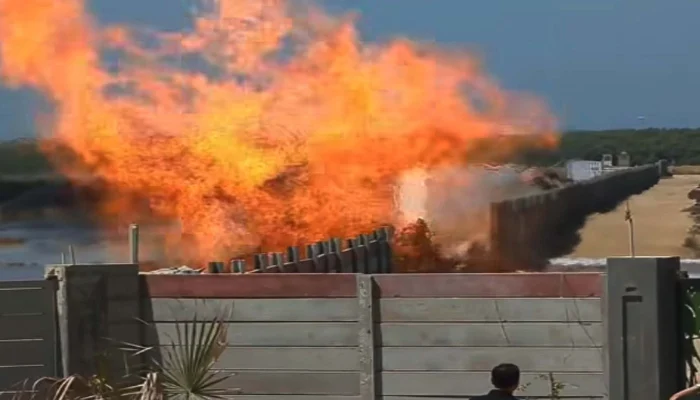A preliminary chemical analysis of water from the site of the ongoing fire near Korangi Creek has revealed the presence of hazardous substances, according to sources familiar with the investigation.
The report, based on samples collected from a ditch formed by the fire outbreak, identified alarmingly high levels of toxic compounds including benzene, toluene, tetrachloroethylene, and traces of o-xylene.
Tetrachloroethylene levels were recorded at 33 micrograms per litre — over six times the safe limit of 5 micrograms. Similarly, benzene was found at 19 micrograms per litre and toluene at 15 micrograms, both exceeding the recommended thresholds by more than threefold. A slightly elevated presence of o-xylene was also noted, though specific figures were not disclosed.
Despite the detection of these toxic substances, the overall hydrocarbon content in the water sample was still within the allowable range, the initial report stated.
These findings emerge as authorities continue to probe the fire incident, which erupted on March 29 during a deep bore drilling operation approximately 1,200 feet underground near the Korangi area. The fire is suspected to have been sparked by the release of biogenic methane gas due to subterranean tectonic activity.
Chief Fire Officer Humayun Khan of the Karachi Metropolitan Corporation previously ruled out the presence of a major underground gas field. He emphasized that although the fire could potentially be extinguished within an hour, doing so might release flammable gases into nearby residential areas, posing a public safety risk.
He explained that in such situations, letting the fire burn out naturally over several weeks is often the safest approach to prevent toxic gas buildup. Delays in chemical testing of the soil and water were attributed to the Eid holidays.
The affected site has been cordoned off by the district administration, with no active firefighting operations currently in progress. Officials are closely monitoring the situation.
Meanwhile, the Sui Southern Gas Company confirmed that none of its facilities are located near the fire zone. Pakistan Petroleum Limited is still evaluating any potential impact on gas supplies.
Experts believe that if the gas reserve is small, the fire may extinguish itself soon. However, if a larger reserve is present, containment strategies will be deployed to prevent risks to nearby communities.










